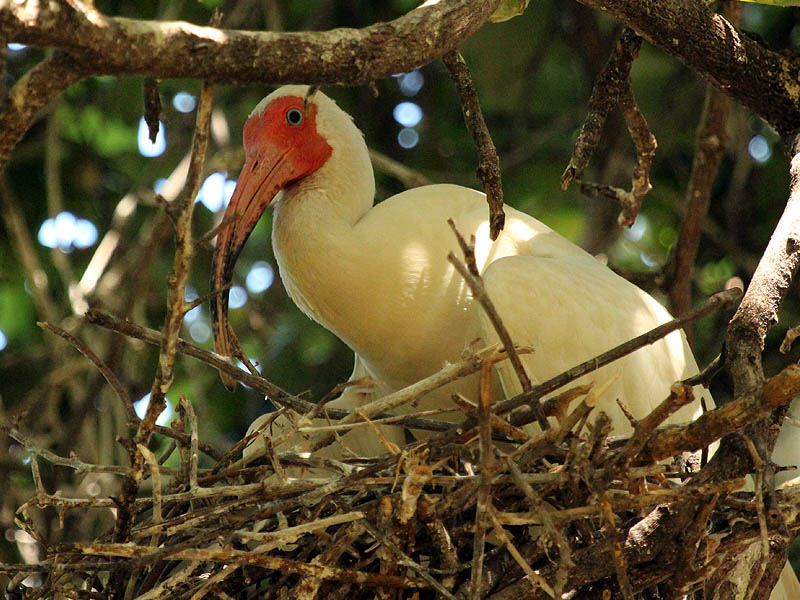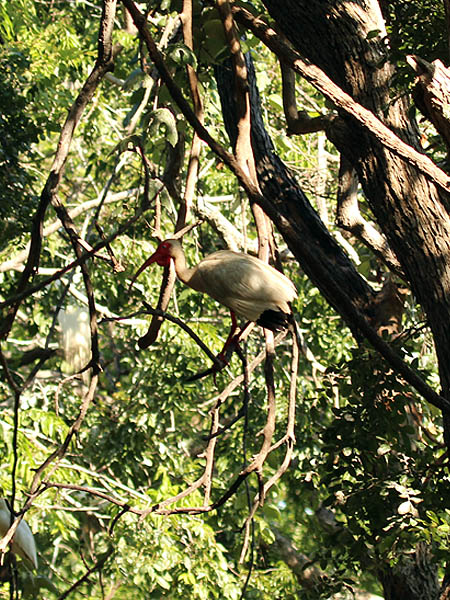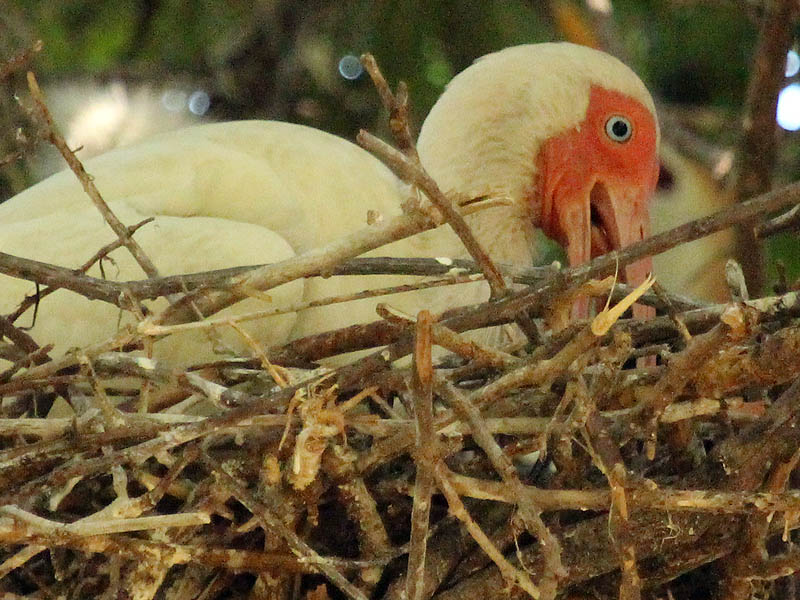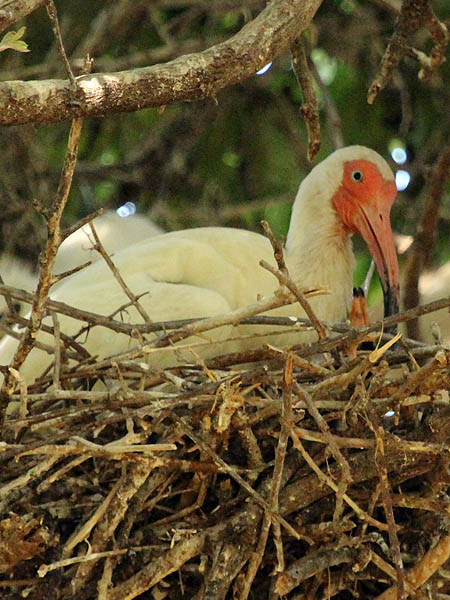Dateline – June 9, 2013
NOTE: This post is part of a continuing series of observations: [ First |<< Prev | Next >> ]
NOTE: Additional update can be found here: Tricolored Heron – UTSWMC Nest Update 9
On this week’s visit to the UTSWMC rookery it quickly became evident that something significant had changed with the White Ibis nests near the perimeter. The adult birds were no longer nestled down in the cup of the nests, instead they were perch on the rims and shielding the interior with slightly outstretched wings. The adult White Ibises were no longer incubating eggs, they were now protecting young hatchlings!



After a few minutes, I finally got a glimpse of one of the tiny ibis chicks as the baby struggled to lift its head up to engage with the adult. The juvenile’s coloration and general appearance might be surprising to some. In place of the adult’s white plumage is a covering of jet black down on the hatchling. The youngster also lacks the long, red, curving bill of the adult bird. Instead the juvenile has a short, straight bill colored with orange and black bands.

After getting a decent look at the White Ibis chicks in the nests along the perimeter of the rookery, I turned my attentions to the interior of the woods. The White Ibis nests in there were very busy, with lots of birds gathered around. Most were still engaged with incubation duties. These nests are roughly a week behind those on the perimeter, and contain no hatchlings at this date.






As I was preparing to leave, I got one more surprise—a changing of the guard on one of the perimeter ibis nests. The second adult bird came in and the two parents did an elaborate dance as they carefully exchanged positions on the nest. The chicks are very vulnerable to predation by the other birds in the rookery at this stage, and the adult ibises could not be too careful as they conducted the hand-off of responsibility.







The relieved bird quickly moved away and began engaging in grooming and other stress relieving behaviors. The remaining parent began attending to the chick in the nest. Feeding via regurgitation ensued.












NOTE: This post is part of a continuing series of observations: [ First |<< Prev | Next >> ]
NOTE: Additional update can be found here: Tricolored Heron – UTSWMC Nest Update 9






